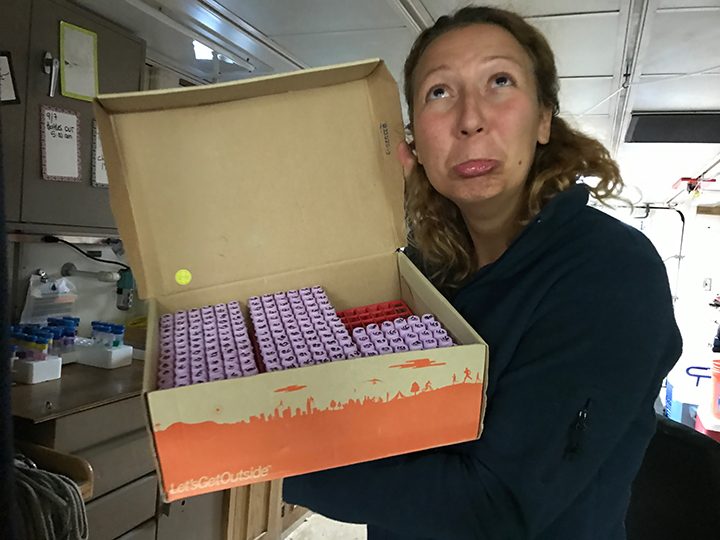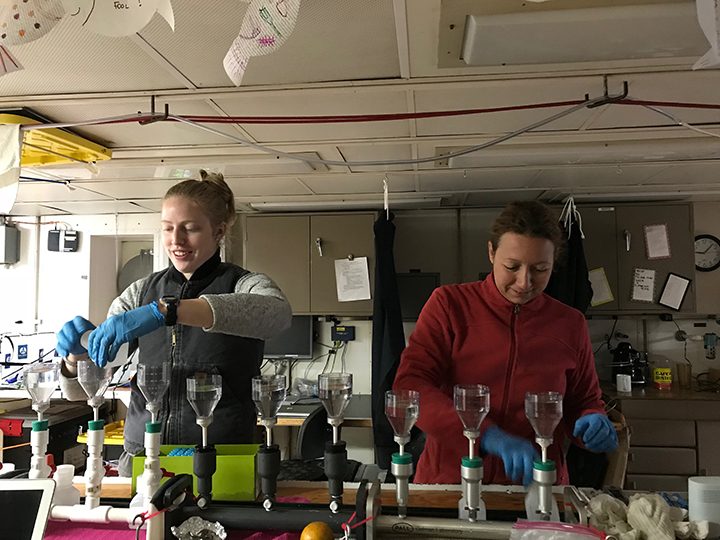Behind the curtain
Dim the light in the main lab, and draw the black curtain! This is the time for the daily after-dinner excitement! Except that the only thing that really gets excited during those evening sessions is the chlorophyll that my two teammates and I are getting ready to measure! We, on the other hand, are not too thrilled when facing the 204 tubes that need processing. Considering that our day started with the 2 am cast, and that so will the next day, even with a short afternoon nap, we want the night show to be as short as possible.

Gayantonia making a face at the tubes to be processed.
Reading all these chlorophyll tubes represents the last step in our experimental work. Each morning we bring in the bottles containing the seawater that we incubated for 24 hours, and we take water samples from each bottle. We then draw out the phytoplankton and collect it onto a filter (We do the same with the water before it goes into the bottles). The filter is inserted into a test tube containing ethanol, a reagent that will extract the chlorophyll from the phytoplankton cells during the next 12 hours. The change in chlorophyll during the incubation provides estimates of the rates at which the cells grow and/or are being eaten by other plankton.

Caitlin and Gayantaonia during the morning filtration
operation
So, reading the chlorophyll is an essential conclusion to the experiments, yet it is a tedious task: Insert a tube into the machine, wait for the instrument to settle on a number, write it down, add 2 drops of acid into the tube, read it again. Repeat. Two hundred and four times! This has to be done under low light, as light can quickly degrade chlorophyll. To isolate the reading station from the light from the lab, we had to be creative, and so we fashioned a makeshift cubicle out a black cloth suspended from the ceiling like a curtain around part of a bench.
Before we can proceed to the reading, we have to remove the filters from the tubes, which can add up to the time spent on the chore. Only one person at a time can read the instrument, but we quickly figured out that we could save a lot of time if the two others removed the filters while the third person started to measure. So the three of us huddle together inside the booth. Stepping inside the cubicle inevitably starts a childish giggling brought about both by the comical situation and the need for sleep. All of a sudden, our behind-the-curtain togetherness and the jokes and stories we share inside our black curtain hideaway transforms chlorophyll reading from tedious to fun… well, at least for a while.

Being silly behind the curtain. Photo credit: Ben Diaz.
Written by Françoise Morison



